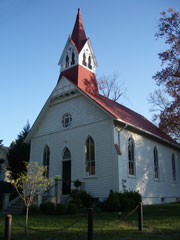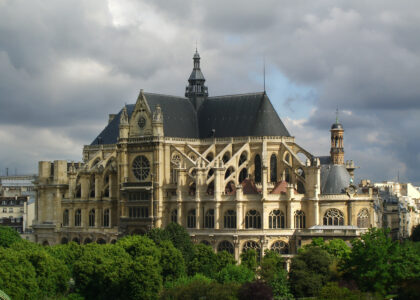Pleasant Grove Church stands as a poignant reminder of the determination and spirit of its founders. Established in 1882 by descendants of freed slaves, this church is a noteworthy representation of 19th-century Virginia vernacular architecture. Under the leadership of Samuel Sharper, the congregation began raising funds to create a place of worship. Their efforts culminated in the purchase of land and the start of construction in 1893. Lewis Henry Sharper, a master craftsman, played a pivotal role in building the church, with significant help from fellow church members who donated their time and materials.
Completed in 1896, the church followed the Carpenter Gothic style, a popular architectural choice for country churches in Virginia at the time. Its simple yet elegant design, marked by a striking belfry and spire, became a central hub for the community. For seventy years, it hosted not only religious services but also numerous social and cultural gatherings, reflecting its importance to the local community.
In 1968, due to dwindling membership, the congregation joined with the William Watters Church. By 1980, the church had been deconsecrated and sold, but it retained much of its architectural integrity despite changes. Today, the Historic Pleasant Grove Church is managed by the Friends of Pleasant Grove, who maintain its legacy by organizing free cultural events and preserving its history through an on-site museum. The land on which it stands holds a deeper historical significance, being the traditional lands of the Tauxenent/Dogue people, part of the Powhatan Paramountcy.
The church is not just a building; it embodies the resilience of a community that overcame adversity to establish a place of spiritual and communal gathering. Its history is intertwined with the broader narrative of African and Native American contributions to the cultural tapestry of Virginia.




